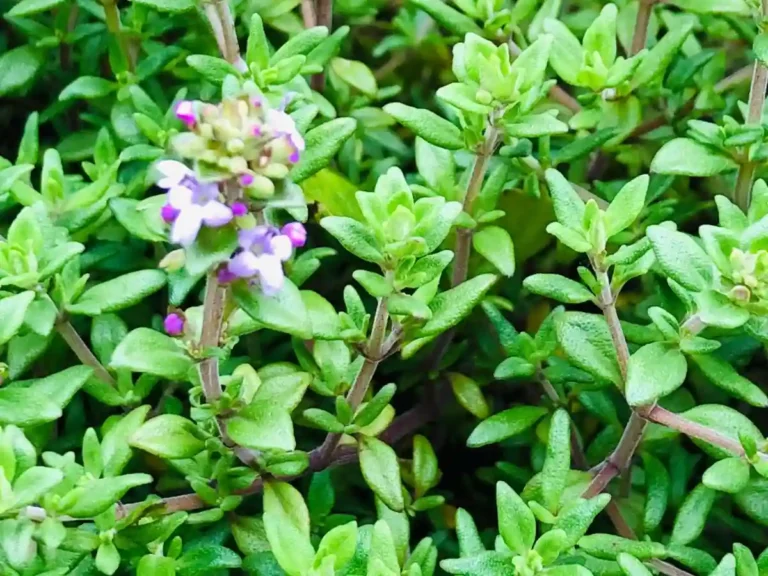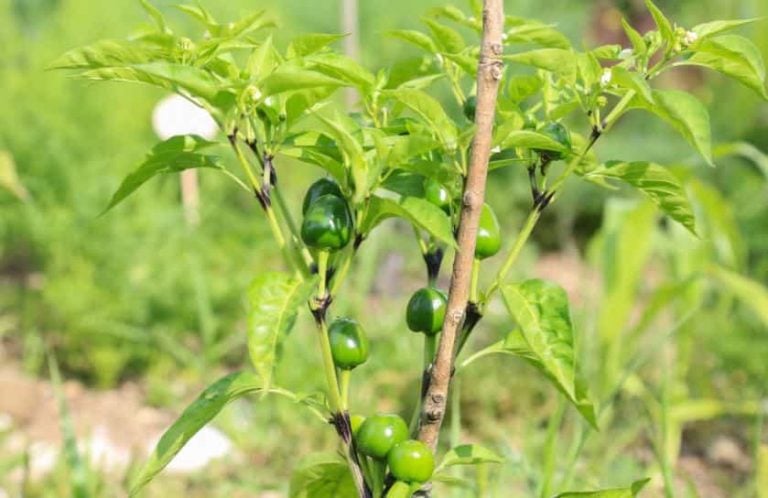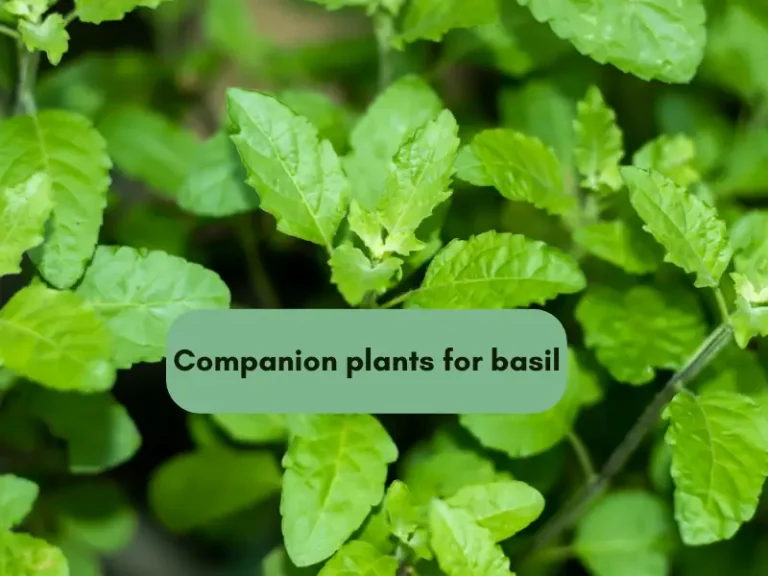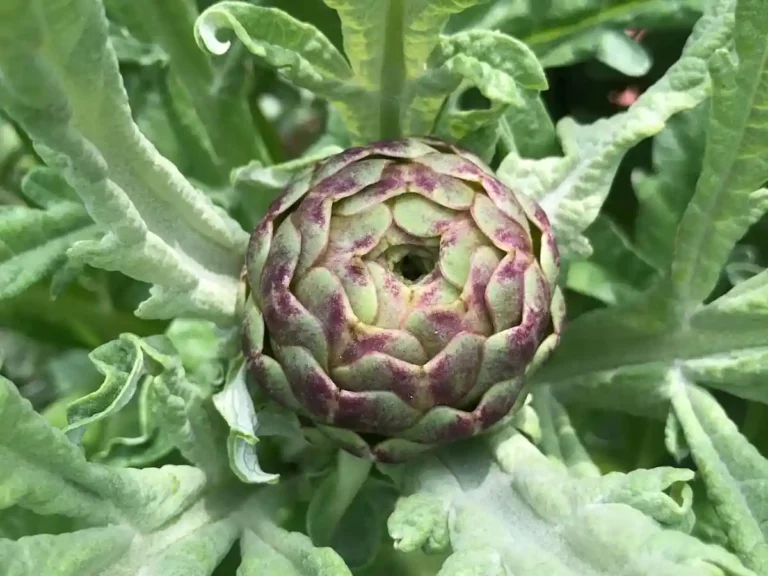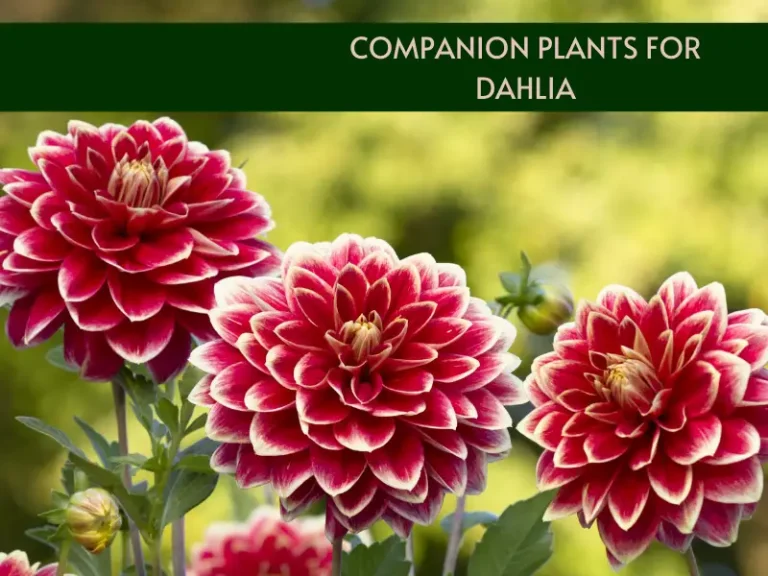Good Companion Plants for Asparagus + 3 Bad Pairs
Asparagus likes to be exposed to the sun and takes two to three years to yield fully. Therefore, pair it with vegetables, herbs, or flowering plants that like full sun exposure and can benefit your asparagus in a way.
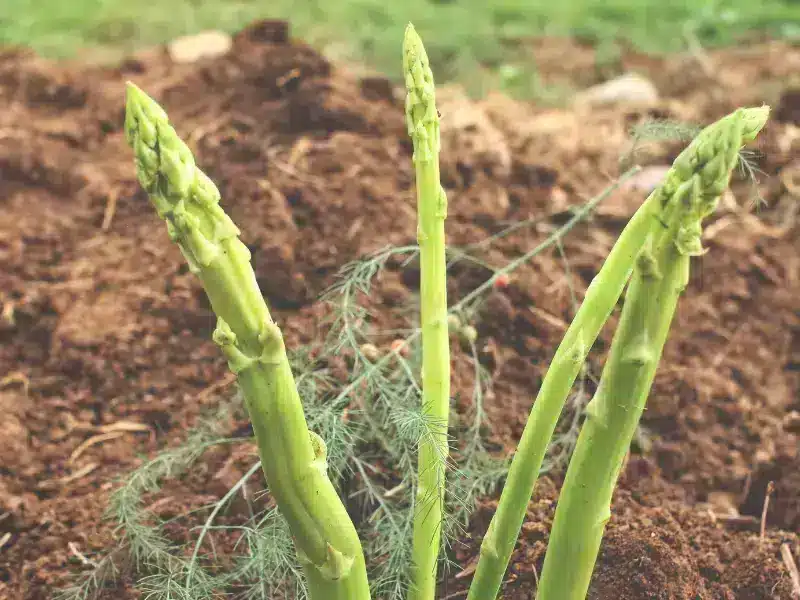
Asparagus has deep roots, so pair it with shallow-rooted plants to reduce competition for nutrients in the soil. Good companions for asparagus include strawberries, tomatoes, spinach, basil, parsley, comfrey, lettuce, cilantro, dill, marigold, eggplants, thyme, nasturtium, rhubarb, and horseradish.
11 Best Companion Plants for Asparagus
Asparagus are prone to damage by asparagus beetles, asparagus miners, and aphids. I recommend pairing them with plants that help repel these pests for better yield.
Here are recommended companions for asparagus:
1. Tomato
Tomato plants release solanine, a chemical that’s known to repel the asparagus beetle. On the other hand, asparagus deters nematodes that are known to attack tomato plants.
Plant the tomatoes along the edges of your garden to prevent damaging the roots of your asparagus plants.
The tomato plant prefers full sun and well-drained soil with a pH of 6.2 to 6.8. The ideal spacing is 24 inches apart on rows 3 feet apart, then apply lime and pre-plant fertilizer depending on the soil test recommendations.
2. Strawberries
Strawberries are excellent for covering the ground between the asparagus rows, leaving enough room to tuck in a row of strawberries with one-foot plant spacing.
Grow your strawberries in full sun with direct sunlight. Use two pounds of fertilizer containing nitrogen, potassium, and phosphorus per ten feet of soil.
Strawberries have shallow roots and grow best in well-drained sandy loam soil with a pH of 6.0 to 6.5. Space the plants 12 to 18 inches apart.
Water the strawberry plants regularly, one to two inches of water per week if the rains are insufficient. Remove the flowers a few weeks after planting, then pick the fruits later that summer.
3. Eggplants
Eggplants are good companion plants for asparagus because they deter asparagus beetles.
Eggplants thrive well in warm conditions. Plant the eggplant seed one-fourth inch deep, then provide bright overhead light for the seedlings. Water the plant with 1 to 2 inches per week for excellent yields.
When the plants grow to about 5 inches tall or after 8 to 10 weeks old, reduce watering.
4. Lettuce
Lettuce is a low-growing leafy green that can be grown between the asparagus as a ground cover because it matures fast and will not compete with the asparagus. Asparagus will also help the lettuce by providing shade with its foliage.
The lettuce plant is relatively cold tolerant, can grow up to 12 to 40 inches high, and is harvested after one growing season.
Space the lettuce plant 9 to 12 inches in a row, depending on the size of the plant.
5. Spinach
Spinach grows well in between the asparagus plants. It matures quickly with shallow roots that will help suppress weeds with its leaves.
It does well in well-drained, rich-in-organic matter soils and can tolerate partial shade.
Plant the spinach seeds in rows 1 to 3 feet apart, spacing the seeds 2 inches apart. Water the plant in the morning to allow the foliage to dry before dark, and apply the lime and pre-plant fertilizer following the soil test recommendations.
6. Basil
The basil plant will help deter pests like asparagus beetles and tomato hornworms. Plant the basil along the edges of your asparagus patch, and if you take care of it and its flower, the basil plant will also attract beneficial insects.
Basil requires full exposure to the sun with a minimum of 6 to 8 hours of bright light per day. It will do well in well-drained soil with a pH of 6.0 to 7.5.
The amount of rainfall will determine how regularly you will water the plant. When the rain is not heavy, water intensely every 7 to 10 days to ensure the roots get sufficient moisture.
Space basil in rows 12 inches between the plants and 18 inches between the rows
7. Parsley
Parsley invites beneficial insects into the garden of your asparagus plants. For example, it hosts swallowtail butterflies essential for pollination. Parsley also has a strong scent that will help deter undesirable insects and pests.
Parsley grows best in rich organic matter and well-drained soil. Fertilize the plant once or twice during the growing season using a commercial fertilizer and water deeply at least once a week.
Spacing your parsley plants should be 10 to 12 inches apart. Harvest the parsley plant while they are still fresh until the seed stalk of the plant is sent up and dies, completing its life cycle.
8. Marigold
You can pair asparagus with marigolds to deter aphids, nematodes, whiteflies, and asparagus beetles.
Marigolds are warm-season annuals with bright, long-lasting blooms that require full sun and well-drained loamy soil to thrive.
The ideal spacing for the plant depends on the mature size of the cultivar—space the French marigold 8 to 10 inches apart and the African marigold 12 to 16 inches apart.
9. Dill
The dill plant has large, umbrella-like, yellow flower clusters that attract pollinators and other beneficial insects. It also has shallow roots and thus can be planted around the bed’s perimeter or between the asparagus rows.
Dill is a very easy-to-grow herb that thrives in full sun and prefers rich, well-drained soil.
Plant seeds up to 1 inch deep and 12 to 15 inches apart. When applying fertilizer, use a 20-20-20-20 formula once in late spring.
10. Comfrey
Comfrey plants protect the asparagus plants against infestation of fungal diseases and rust problems. They also increase fertilization by naturally attracting pollinators to the garden and drawing in beneficial parasitic wasps.
Comfrey is a hardy perennial that grows from about 3 to 4 feet high with leaves 5 inches wide and 12 inches long.
Grow comfrey plants in full sun or partial shade when the climate is hot. This plant prefers moist, fertile soil but can adapt to many soils. When the comfrey plant is young, water it consistently, then reduce as it grows older as it will become more drought tolerant.
11. Cilantro
The flowers of cilantro plants attract beneficial insects to the asparagus garden. In addition, the plant has shallow roots and thus can be grown between the asparagus rows.
The cilantro plant is a cool-season plant that likes light, well-drained, fertile loam sandy soil. However, it can tolerate various soils as long as you can monitor the moisture and nutrient levels.
Space the plants 2 inches apart in rows 12 to 15 inches apart if you want to harvest the leaves. If you’re going to harvest the seeds, place the plants 8 inches apart in rows 15 inches apart.
Bad Companion Plants for Asparagus
Some plants, especially plants that have deep roots, should not be paired with asparagus. These plants include alliums, carrots, and potatoes.
Alliums
Alliums are members of the onion family that take a lot of time to grow and absorb a lot of water and nutrients. They can pose serious competition for nutrients and make your asparagus grow poorly.
Avoid planting garlic, onions, leeks, chives, or other onion family plants near the asparagus plants.
Carrots
Carrots have long taproots too, which can compete with the asparagus roots if grown too close. Also, carrots do not grow well with some of the asparagus companion plants like dill.
Potatoes
Potatoes also grow deep in the soil, just like asparagus, making them compete for nutrients and water, thus damaging the asparagus root system.
References
- University of Minnesota Extention: Growing Asparagus


